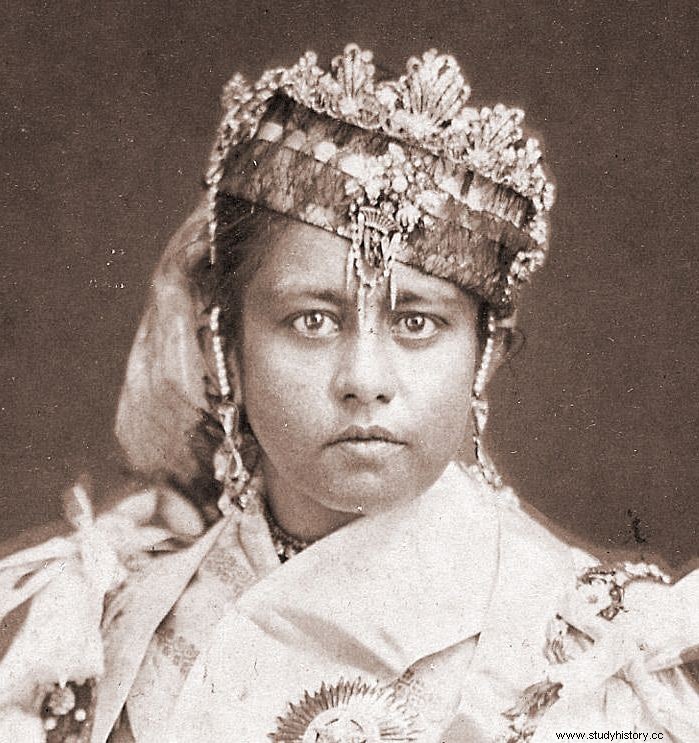Nawab of the Principality of Bhopal, India, Shahjahan Begum (1838 – 1901) ruled effectively and is still considered a great and popular ruler.
Sovereign at 6

Born on July 29, 1838 in Islamnagar, in the principality of Bhopal (India), Shahjahan is the only surviving child of Sikandar Begum (a title given to the wives of kings and queens) and Jahangir Mohammed Khan, nawab (Indian Muslim ruler) of Bhopal. She is descended from Qudsia Begum, who herself became regent of Bhopal in 1819 after her husband's death, and who had held the reins of power for 18 years.
Like her mother before her, Shahjahan was raised and educated to rule a state, but she came to the throne at just six years old. An age when she is not able to exercise power; it is therefore his mother who ensures the regency. In 1860, however, the British recognized Sikandar Begum as ruler of Bhopal and Shahjahan was removed from the throne. It was not until the death of her mother in 1868 that she regained power. Young widow, her husband married in 1855 having died the previous year, she then took the title of Sultan Shah Jahan Begum Sahiba.
An efficient queen
Shah Jahan Begum embarks on a series of administrative reforms:it improves the tax system, modernizes the army and its equipment and increases the salaries of soldiers and certain civil servants. Concerned about agriculture, she built a dam and an artificial lake to store rainwater when needed. Faced with epidemics and in particular two episodes of plague, Shah Jahan launched censuses to adapt its policy to the demography of the principality. Finally, she orders the cultivation of opium to replenish the state coffers.
Considered an able and popular sovereign, Shah Jahan is also an intellectual and is credited with several works written in Urdu, including an autobiography and a work describing the first years of her reign. In 1871, she remarried Siddiq Hasan Khan, a marriage that created controversy because the remarriage of widows was not well regarded in Indian traditions. At the wedding, it is specified that her husband will have no executive role and that Shah Jahan will remain the titular sovereign.
A pious ruler and builder, Shah Jahan initiated the construction of one of the largest mosques in Asia, the Taj-ul-Masajid, which would not be completed until 1971. She also had the Taj Mahal palace built in Bhopal (not to be confused with the famous Taj Mahal in Acra). It also contributes, through large donors, to the construction of a mosque in the United Kingdom and the Muslim University of Aligarh in India.
End of reign
In 1901, Shah Jahan Begum learned that she was suffering from cancer. She then prepares for her death by addressing a public message, asking for forgiveness from the people of Bhopal in case she has caused harm to one of her subjects. The popular emotion that arises from this message shows that she is still a popular sovereign.
Sultan Shah Jahan Begum died in June 1901.
